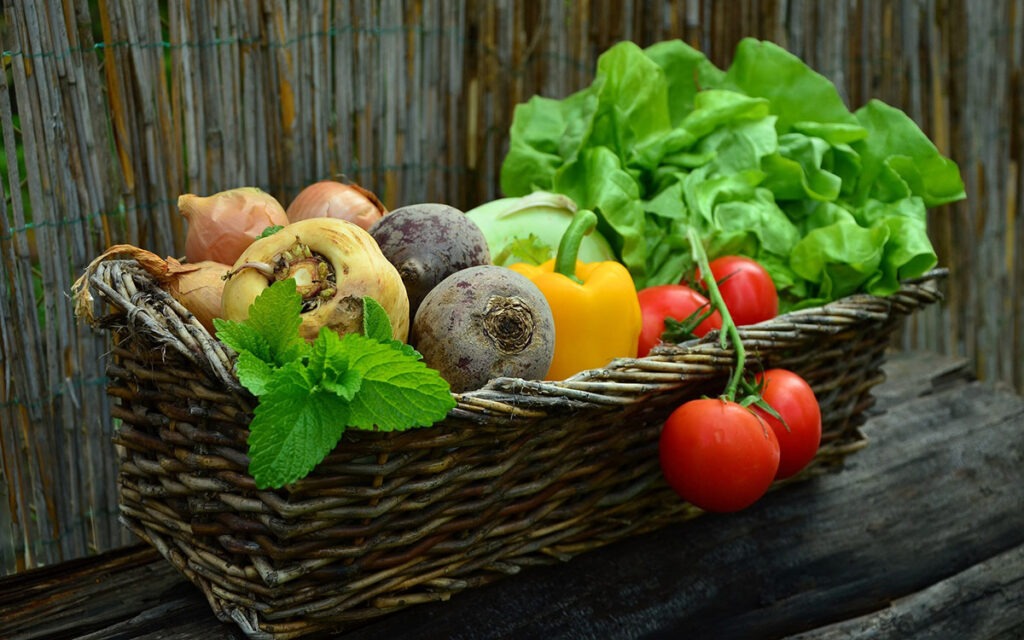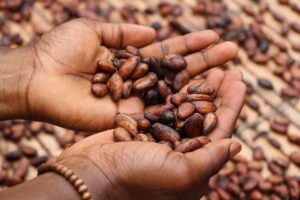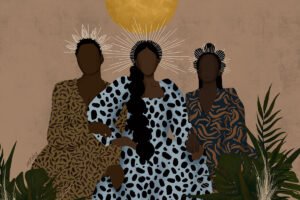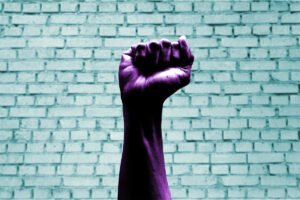

This article concludes the Community Strategies for Systemic Change, a series co-produced by the Local Initiatives Support Corporation (LISC) and NPQ. In the series, urban and rural grassroots leaders from across the United States share how their communities are developing and implementing strategies—grounded in local places, cultures, and histories—to shift power and achieve systemic change.
The Cihuapactli Collective (CC) began seven years ago in Phoenix, Arizona, in response to the call of a mother, CC’s co-executive director, Maria Parra Cano.
The collective took shape two months after Parra Cano gave birth. Her mother had recently passed away, and she was experiencing the baby blues. In response to her call, 14 founding CC members began meeting in coffee shops to discuss healing ourselves. Conversations regarding womb health and parenting in an urban Indigenous setting led to the development of community workshops that centered women’s and partum health. Over time, CC began to be recognized for its work, and the organization expanded to serve BIPOC families in Phoenix from womb to tomb.
During its first three years, CC members focused on healing our tight-knit Native community. Many of us had known one another for decades; we were part of the same community, spiritual, and organizing circles. Now, in our baby making and child rearing years, ancestral knowledge took center stage. Every member brought to the collective cihuapactli, or women’s medicine in the traditional language Nahuatl of the Aztec/Mexica. Just as many of us had done before, we worked in the community and as a community.
We possessed ancestral knowledge from a variety of nations. Most founding members hailed from tribes in the present-day nations of Mexico and Guatemala, such as Mexica/Aztec, Texcocatl, Yaqui/Yoeme, Purepecha, Raramuri, Tarahumara, and Maya. Tribes from Colombia, the Philippines, and the Caribbean were also represented. CC also has members from northern tribes such as O’odham and Lakota. Nearly seven years after its founding, CC has served and represented upwards of 55 Native nations across the globe, while navigating a system that does not always recognize us as being Indigenous enough.
Walking in two worlds
As a nonprofit, CC’s organizational structure was influenced by ceremonial and Indigenous values. Our board of directors and officers draw on CC’s elders’ advisory council in addition to the organization’s founders.
The concept of walking in two worlds—a settler-colonial world and a Native world—is central to CC’s structure. For CC, neither certificates nor government designations are needed to certify the group’s ancestral knowledge. Despite this understanding, the founders—who included stay-at-home moms, social workers, journalists, chefs, and women with doctorate degrees—must negotiate between the two worlds and strategically make decisions regarding how to open doors for the communities we serve.
For its first five years, CC ran largely out of the Parra Cano household. From this location, women and their children filled packages and tote bags with seeds and medicines to mail to the attendees of our annual ancestral womb wellness gathering (AWWG). We created shifts for womb care and massages. As folks walked past the kitchen table on the way to the treatment room in the house, those who lingered laid the foundations for the nonprofit.
The first AAWG, launched with the humble goal of helping us to heal ourselves, attracted over 200 people. This event builds on longstanding community traditions. For years, women would host potlucks and what we call comadre brunches. A comadre—which translates literally into English as co-mother—is a family friend who cares for the family and takes on household chores. When one of us in the community gave birth, we would support the new mother for 40 days in this manner by bringing food. When a baby passed on, we would check on and check in with one another, something so simple, yet elemental.
During founders’ meetings, we discussed how we hoped to define and describe our organization and implement the Indigenous values that so many of us seek to pass on to our offspring. For the first four years, this labor was unpaid; our events were self-funded.
We sensed that mothers and families in our community likely lived with similar experiences to us and similar Indigenous values—and had limited support. The concept of serving families from womb to tomb came to be.
COVID-19 compels change
As it did to so many organizations, the COVID 19 pandemic shifted CC in unexpected ways. It impacted the local food system in South Phoenix, and many food-based businesses faced closure. Maria Parra Cano’s family business was among them.
Prior to the pandemic, the business, Sana Sana Foods, was thriving, with a well-known food truck. Its mission to “feed the people” was well received as the family centered ancestral foods in the vegan Mexican cuisine they served.
Because the Parro Cano family owned Sana Sana Foods and participated in CC, the two entities often collaborated. During the pandemic, they merged in order to attract philanthropic funding and for economic survival. Importantly, their missions overlapped, for food justice and maternal health are connected. And indeed, the benefits of the merger extended far beyond financial survival. Most importantly, the link between food justice, land restoration, and birthing work became readily apparent.
In an ironic development, just as many nonprofits were abandoning physical offices, CC for the first time acquired one. Located in Central Phoenix, the new office also became home to an urban garden.
As we grew herbs for postpartum care, it became clear that food is fundamental to all aspects of healing and that there was a broad public need for this knowledge to be disseminated. As the pandemic raged on, we found that the ancestral earth-based knowledge and Native science that we provided had become practical information and skills that were widely requested by community members and the media.
Sign up for our free newsletters
Subscribe to NPQ's newsletters to have our top stories delivered directly to your inbox.
By signing up, you agree to our privacy policy and terms of use, and to receive messages from NPQ and our partners.
Deepening the vision
Our community began to read articles that provided practical nutritional information and receive our nutrient dense Indigenous food packages. We are touched when community members share stories about how the food that we serve reminds them of their grandmother or recipes from childhood.
The conversations as we handed food bags into the driver-side windows of cars on our makeshift driveway often went something like: “Oh wow. It’s heavy! Thank you! I didn’t know you all got an office. I didn’t know that the collective did food work. I think of you all as providing postpartum care.”
We would quickly catch up through car windows and masks. These conversations with our community helped us to weave together a narrative in which postpartum care, food, and land restoration are inextricably linked. Increasingly, our birthing, food justice, and land restoration work occured in tandem and became a fixture of CC’s strategic plan. As we witnessed the growth of our humble garden, the regenerative aspects of the gardening process reminded us that the land is restored through these ancestral land practices—and the ways that individuals and communities reconnect to their lineages, family recipes, and traditional ways began to resurface.
When birth work, food justice, and land restoration occur in tandem, the womb can be a place to heal from generational trauma. This work is at the root of CC’s efforts towards systemic change. Simply put, it dawned on us that something as simple as restoring ancestral practices of food cultivation could not only increase nutrition, but also reduce generational trauma.
If parental ancestral wisdom and healing can be activated through food, if neural pathways for peace and tranquility instead of stress and trauma are created in the womb, then maybe the next generation can be born without the markers that predispose them to mental health challenges, like anxiety and depression, and disease, such as hypertension and diabetes.
And what could accomplish this? An Indigenous food pack, grown on Indigenous land, by BIPOC farmers. We were being reminded of the importance of sovereignty, the ability to determine and meet your own and your community needs by having control over your body, your choices, and a small bit of land.
Although these connections may seem lofty and loosely connected, epigenetics, the study of how behaviors and environment can change the way our genes work, highlights the impact of generational trauma on DNA. Science is revealing that chronic stress impacts hormones, mental health, and disease expression. Science is also confirming the value of ancestral knowledge. In our understanding, ceremony, and living off the land are critical tools that empower community members to heal from intergenerational trauma.
With this inspiration and fire in our belly, the organizational vision deepened. An emphasis on systems change brought CC and its communities back to the importance of land sovereignty, working the land in community, addressing family from conception, and revitalizing community connections to land.
Decolonizing our community
Eurocentric frameworks place birth and death on a linear timeline. In precolonial systems, birth and death are two points of a circle that constantly brush up against one another. This ancestral knowledge was easy to understand and live out in the birthing space, but now, those circles—seasons and transitions overlapping and meeting one another in growing cycles—add more layers and textures to the rich landscape that CC is cultivating. If we consider a healthy birth a critical starting point to living healthy lives, then growing food is a complementary starting point. We are reminded of the value of cultivating a harmonious connection between humans and land.
CC began as an organization dedicated to education and cultural revitalization. Although known for birth work—specifically, postpartum care—our work and the needs of the community span every reproductive phase and outcome. Our work also focuses on birth justice and birth equity. Because of our experience in the birthing space and the attention that CC has begun to receive, we are now being called into spaces of advocacy and consultation. And the final and fourth focus of our work—food justice and land restoration—completed CC’s mission, even if took a pandemic to connect these dots. Those overlapping points became our sacred bundles, our pillars, and the foundation of our organization.
The value of coalitions
CC’s dream time and prayers continue to guide and surprise us.
Poised to receive seven acres of land in South Phoenix, a historically Black neighborhood, we are responding to calls from the land. Building relationships has also always been a cornerstone of CC’s foundation.
The acreage is home to the Sotelo-Heard Cemetery, an abandoned cemetery established when the land was part of Mexico. The housing development company that has owned the land for many years did not want to disturb the cemetery. Vice Mayor Carlos Garcia has proposed a land swap between the owners, the city, and CC. We expectantly wait to receive the deed to the land, as we are anxious to build a wellness center, food forest, and teaching kitchen with our community, partners, and friends on the property.
CC maintains its strong sense of identity, but now we work in collaboratives with sister and brother organizations that serve our Black and Indigenous relatives. Once again, the land brought us to this iteration. Land restoration is incomplete without Black liberation, and said liberation is incomplete without Indigenous sovereignty and the restoration of right relationship to the land. The call from these seven acres is deep.
Like the mother of a newborn begins to hone her ears to the cues of a baby, CC members are honing our hearts to cues from the land. We are honing our ability to work from a multisector approach, where community partners can dream and build with us while maintaining their organizational sovereignty. We continue to make mistakes and build relationships, maybe not in that linear order, but with two points of a circle, constantly brushing up against one another.








